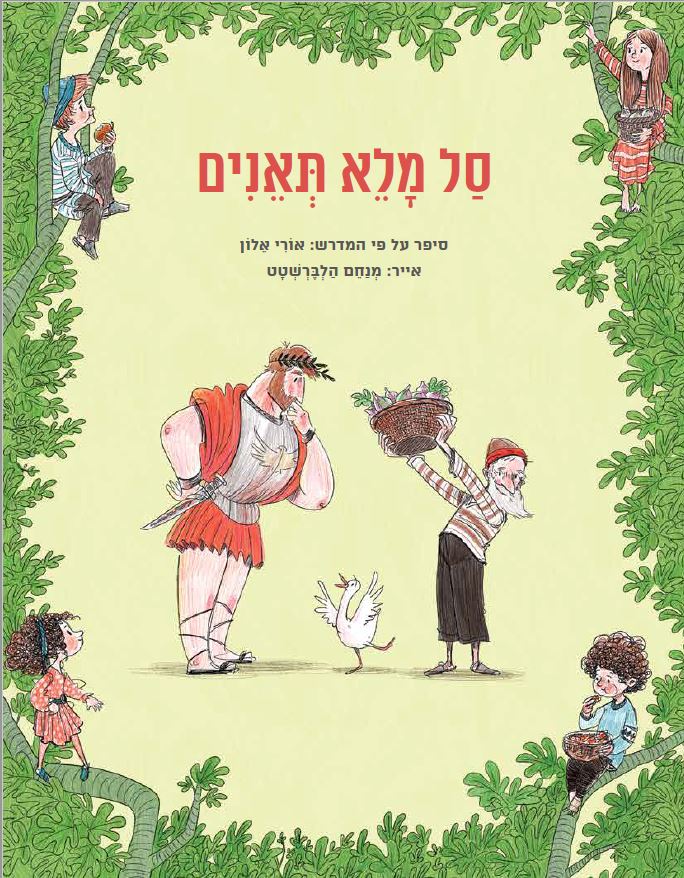Dear Parents,
A Basket Full of Figs is a new version of an old story about the connection between generations, as well as between humans and nature. The book is based on a story from the Midrash, and is an open invitation to a family discussion on what each generation does for those that follow it.
"As my forefathers planted these for me, so I too plant these for my children"
(according to Taanit 23a)
In Jewish tradition there are many expressions of the value of planting and safeguarding the world for future generations. We are born into a world full of goodness, enjoy a vast range of fruit, products and inventions others have worked hard for in past generations. Just like the old man in the story, we too must continue to plan and develop for future generations.
The story about King Hadrian and the elderly man is based on Midrash Tanhuma for the Sedra of Kedoshim, chapter 8:
"King Hadrian once went to war and traveled with his troops to fight a country that had rebelled him. He came across an elderly man on the way who was planting figs.
Hadrian said to him: You are old and are working hard for others!
And he responded: Your Majesty, I am planting. If I live to do so, I will enjoy the fruit of the tree I planted. And if not, my children will.
He was at war for three years and returned. Three years later he came across the same elderly man in the same place.
What did the elderly man do?
Took a basket, filled it with his best figs, and approached Hadrian.
He said to him: Your Majesty, please receive these from your servant. I am the elderly man you came across on your way to war, and you told me 'You are old and are working hard for others, and here I am, and G-d has given me the privilege of eating from the fruit of the tree I planted, and these in the basket are your share.
Hadrian immediately told his servants: Take it from him and fill it with golden coins.
And so they did."
Who was King Hadrian?
Hadrian was Roman emperor following the destruction of the Second Temple, from 117 to 138. He was a great, important emperor, and Rome thrived under his rule; however, in Jewish tradition he is remembered as a terrible enemy. When he first assumed the throne, Hadrian declared that he would rebuild Jerusalem, as well as the Temple. To the Jews' bitter disappointment, late in his reign he ruthlessly suppressed the Bar Kokhba revolt, issuing harsh royal decrees against the Jews: capital punishment for anyone who observed Shabbat, circumcised their children, learned Torah, or put on Tefillin. He turned Jerusalem into a pagan city, renaming it Aelia Capitolina, banned Jews from it, and placed a statue of himself where the Temple once stood.
If you ever visit the Israel Museum in Jerusalem, you can see the statue of Hadrian found in the Beit Shean Valley – a symbol of Hadrian's victory over the Jews, and his suppression of the Bar Kokhba revolt.
Enjoy reading and discussing the book together, and doing the various activities!





